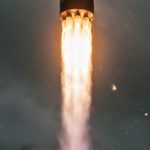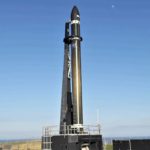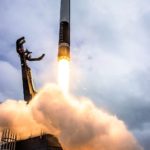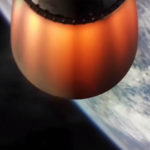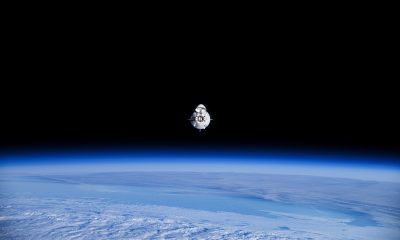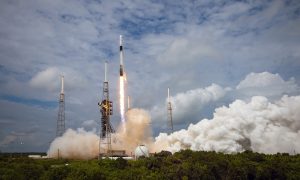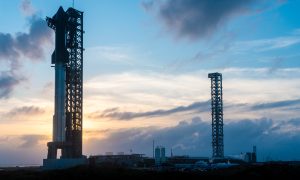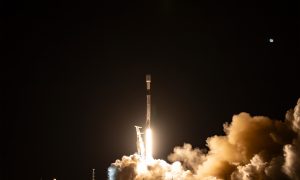News
DeepSpace: Rocket Lab bucks the saying that ‘space is hard’ with 4th Electron success

This is a free preview of DeepSpace, Teslarati’s new member-only weekly newsletter. Each week, I’ll be taking a deep-dive into the most exciting developments in commercial space, from satellites and rockets to everything in between. Sign up for Teslarati’s newsletters here to receive a preview of our membership program.
Rocket Lab continues to buck the adage that “space is hard” with its small but increasingly reliable Electron rocket. After a slight range hardware malfunction caused a launch abort just shy of orbit during Electron’s inaugural May 2017 launch attempt, Rocket Lab fixed the issue and returned to flight, successfully completing Electron’s first orbital launch in January 2018. On November 11th, 2018, the rocket completed its first truly commercial launch, placing seven various satellite into Low Earth Orbit (LEO), rapidly followed by Electron’s fourth successful launch on December 16th, barely one month later.
On March 29th, Rocket Lab completed yet another milestone launch for Electron, successfully placing its heaviest payload – an experimental ~150 kg DARPA spacecraft known as R3D2 – into an accurate orbit. Even relative to SpaceX’s barebones Falcon 1 launch campaign, which attempted five launches – two successfully – over a three year career, Rocket Lab’s Electron has progressed at an extraordinary pace, taking less than two years to complete its fifth launch and achieving its first launch success after just one attempt and eight months of flight operations.
Relentless progress
- To find a rocket with a comparable record of success less than two years after its first launch attempt, one must jump back more than half a century to the late 1950s and early 1960s, when Russia and the US were putting their industrial mights to the challenge of achieving spacefaring ‘firsts’. Almost all of those original vehicles – including Redstone, Atlas, Delta, Thor, Titan, and even Saturn V – were able to weather early failures and achieve extraordinary launch cadences just 12-24 months after their debuts.
- None, however, were developed as an entirely commercial rocket with almost exclusively private funds, although ESA’s Ariane 3 and 4 vehicles nearly fit the bill, with exemplary commercial track records and impressive acceleration from debut to high launch cadences.
- Incredibly, Rocket Lab has brought Electron from paper to its fourth successful launch in ~16 months on what can only be described as a shoestring budget relative to all past efforts, perhaps even Elon Musk and SpaceX.
- According to public investment records, the small US-based, New Zealand-operated company may have reached orbit for the first time with less than $100M, including ~$70M in equity investment and unspecified development funding from DARPA in the early 2010s.
- Rocket Lab’s Electron rocket is quite small, measuring 1.2 m (~4 ft) wide, 17 m (56 ft) tall, and 12,500 kg (27,600 lb) at liftoff, anywhere from a quarter to half the size of SpaceX’s Falcon 1, by most measures.
- Electron is capable of placing 150–225 kg (330–495 lb) into either a 550 km (340 mi) sun synchronous orbit (SSO) or a lower low Earth orbit (LEO).
- Electron is advertised with a commercial list price of around $6M.
- Aside from Electron’s industry-defying record of achievement, its R3D2 launch is impressive for another reason: the cost of the payload relative to the cost of launch. For a rocket on its fifth-ever launch, DARPA reportedly spent no less than $25M to fund the development of the experimental R3D2 smallsat, while – as mentioned above – the cost of Electron’s launch could have been as low as ~$6M from ink to orbit.
- In slightly different terms, Electron has now launched a payload that could be 4-5X more valuable than itself after just three prior launch successes and less than two years after beginning operations.
- While ~$30M would not be a huge loss for a military agency like DARPA (FY19 budget: $3.4B), DARPA’s trust in Electron demonstrates impressive confidence in not just Electron, but also Rocket Lab’s standards of manufacturing, operations, and mission assurance.
- Relative to a vehicle like Falcon 9 or Atlas V, Electron’s R3D2 mission would be comparable to launching spacecraft worth ~$250M to $500M after just five launches. Both larger rockets accomplished similar feats, but small launch vehicles are historically known for less than stellar reliability.

Go[ing] forth and conquer[ing]
- Put simply, Rocket Lab has managed to build what appears to be a shockingly reliable small launch vehicle with a budget that would make Old Space companies whimper, all while offering a potential cadence of dozens of annual launches at per-launch costs as low as $6M.
- While the cost-per-kg of a $6M Electron launch is still extremely high relative to larger rockets and rideshare opportunities, what Rocket Lab has achieved is nothing short of spectacular in the commercial spaceflight industry.
- If there ever was an actual ‘space race’ to fill the small launch vehicle void created by the growth of small satellite launch demand, Rocket Lab has won that race beyond the shadow of a doubt. There is still plenty of room for competition and additional cost savings from a customer perspective, but Electron is so early to the party that future competition will remain almost entirely irrelevant for the better part of 2-3 more years.
- According to CEO Peter Beck, the company’s ambition is to sustain monthly Electron launches in the nine remaining months of 2019. Flight 6 hardware is likely already on its way to Rocket Lab’s Mahia, New Zealand Launch Complex 1 (LC-1).


Mission Updates
- The second launch of Falcon Heavy – the rocket’s commercial debut – is still scheduled to occur as early as April 7th, but a slip to April 9-10 is now expected. The massive rocket’s static fire – the first for a Block 5 Falcon Heavy – is set to occur as early as Wednesday, April 3rd.
- After Falcon Heavy, Cargo Dragon’s CRS-17 resupply mission is firmly scheduled for April (April 25th), while the first dedicated Starlink launch is now NET May 2019.
- In late May, SpaceX could launch Spacecom’s Amos-17 spacecraft, effectively free to the customer as part of a settlement following the tragic Amos-6 Falcon 9 anomaly that destroy the rocket, satellite, and large swaths of the LC-40 pad in September 2016.
Photo of the Week

Elon Musk
Tesla investors will be shocked by Jim Cramer’s latest assessment
Jim Cramer is now speaking positively about Tesla, especially in terms of its Robotaxi performance and its perception as a company.

Tesla investors will be shocked by analyst Jim Cramer’s latest assessment of the company.
When it comes to Tesla analysts, many of them are consistent. The bulls usually stay the bulls, and the bears usually stay the bears. The notable analysts on each side are Dan Ives and Adam Jonas for the bulls, and Gordon Johnson for the bears.
Jim Cramer is one analyst who does not necessarily fit this mold. Cramer, who hosts CNBC’s Mad Money, has switched his opinion on Tesla stock (NASDAQ: TSLA) many times.
He has been bullish, like he was when he said the stock was a “sleeping giant” two years ago, and he has been bearish, like he was when he said there was “nothing magnificent” about the company just a few months ago.
Now, he is back to being a bull.
Cramer’s comments were related to two key points: how NVIDIA CEO Jensen Huang describes Tesla after working closely with the Company through their transactions, and how it is not a car company, as well as the recent launch of the Robotaxi fleet.
Jensen Huang’s Tesla Narrative
Cramer says that the narrative on quarterly and annual deliveries is overblown, and those who continue to worry about Tesla’s performance on that metric are misled.
“It’s not a car company,” he said.
He went on to say that people like Huang speak highly of Tesla, and that should be enough to deter any true skepticism:
“I believe what Musk says cause Musk is working with Jensen and Jensen’s telling me what’s happening on the other side is pretty amazing.”
Tesla self-driving development gets huge compliment from NVIDIA CEO
Robotaxi Launch
Many media outlets are being extremely negative regarding the early rollout of Tesla’s Robotaxi platform in Austin, Texas.
There have been a handful of small issues, but nothing significant. Cramer says that humans make mistakes in vehicles too, yet, when Tesla’s test phase of the Robotaxi does it, it’s front page news and needs to be magnified.
He said:
“Look, I mean, drivers make mistakes all the time. Why should we hold Tesla to a standard where there can be no mistakes?”
It’s refreshing to hear Cramer speak logically about the Robotaxi fleet, as Tesla has taken every measure to ensure there are no mishaps. There are safety monitors in the passenger seat, and the area of travel is limited, confined to a small number of people.
Tesla is still improving and hopes to remove teleoperators and safety monitors slowly, as CEO Elon Musk said more freedom could be granted within one or two months.
News
Tesla launches ultra-fast V4 Superchargers in China for the first time
Tesla has V4 Superchargers rolling out in China for the first time.

Tesla already has nearly 12,000 Supercharger piles across mainland China. However, the company just initiated the rollout of the ultra-fast V4 Superchargers in China for the first time, bringing its quick-charging piles to the country for the first time since their launch last year.
The first batch of V4 Superchargers is now officially up and running in China, the company announced in a post on Chinese social media outlet Weibo today.
The company said in the post:
“The first batch of Tesla V4 Superchargers are online. Covering more service areas, high-speed charging is more convenient, and six-layer powerful protection such as rain and waterproof makes charging very safe. Simultaneously open to non-Tesla vehicles, and other brands of vehicles can also be charged. There are more than 70,000 Tesla Superchargers worldwide. The charging network layout covers 100% of the provincial capitals and municipalities in mainland China. More V4 Superchargers will be put into use across the country. Optimize the charging experience and improve energy replenishment efficiency. Tesla will accompany you to the mountains, rivers, lakes, and seas with pure electricity!”
The first V4 Superchargers Tesla installed in China are available in four cities across the country: Shanghai, Zhejiang, Gansu, and Chongqing.

Credit: Tesla China
Tesla has over 70,000 Superchargers worldwide. It is the most expansive and robust EV charging network in the world. It’s the main reason why so many companies have chosen to adopt Tesla’s charging connector in North America and Europe.
In China, some EVs can use Tesla Superchargers as well.
The V4 Supercharger is capable of charging vehicles at speeds of up to 325kW for vehicles in North America. This equates to over 1,000 miles per hour of charging.
Elon Musk
Elon Musk hints at when Tesla could reduce Safety Monitors from Robotaxi
Tesla could be reducing Safety Monitors from Robotaxi within ‘a month or two,’ CEO Elon Musk says.

Elon Musk hinted at when Tesla could begin reducing Safety Monitors from its Robotaxis. Safety Monitors are Tesla employees who sit in the front passenger seat during the driverless rides, and are there to ensure safety for occupants during the earliest rides.
Tesla launched its Robotaxi fleet in Austin last Sunday, and after eight days, videos and reviews from those who have ridden in the driverless vehicles have shown that the suite is safe, accurate, and well coordinated. However, there have been a few hiccups, but nothing that has put anyone’s safety in danger.
A vast majority — close to all of the rides — at least according to those who have ridden in the Robotaxi, have been performed without any real need for human intervention. We reported on what was the first intervention last week, as a Safety Monitor had to step in and stop the vehicle in a strange interaction with a UPS truck.
Watch the first true Tesla Robotaxi intervention by safety monitor
The Tesla and UPS delivery truck were going for the same street parking space, and the Tesla began to turn into it. The UPS driver parallel parked into the spot, which was much smaller than his truck. It seemed to be more of an instance of human error instead of the Robotaxi making the wrong move. This is something that the driverless cars will have to deal with because humans are aggressive and sometimes make moves they should not.
The Safety Monitors have not been too active in the vehicles. After all, we’ve only seen that single instance of an intervention. There was also an issue with the sun, when the Tesla braked abnormally due to the glare, but this was an instance where the car handled the scenario and proceeded normally.
With the Robotaxi fleet operating impressively, some are wondering when Tesla will begin scaling back both the Safety Monitors and Teleoperators that it is using to ensure safety with these early rides.
CEO Elon Musk answered the inquiry by stating, “As soon as we feel it is safe to do so. Probably within a month or two.”
As soon as we feel it is safe to do so.
Probably within a month or two. We continue to improve the Tesla AI with each mile driven.
— Elon Musk (@elonmusk) June 30, 2025
Musk’s response seems to confirm that there will be fewer Teleoperators and Safety Monitors in the coming months, but there will still be some within the fleet to ensure safety. Eventually, that number will get to zero.
Reaching a point where Tesla’s Robotaxi is driverless will be another significant milestone for the company and its path to fully autonomous ride-sharing.
Eventually, Tesla will roll out these capabilities to consumer-owned vehicles, offering them a path to generate revenue as their car operates autonomously and completes rides.
For now, Tesla is focusing on perfecting the area of Austin where it is currently offering driverless rides for just $4.20 to a small group of people.
-

 News5 days ago
News5 days agoTesla Robotaxi’s biggest challenge seems to be this one thing
-

 News2 weeks ago
News2 weeks agoTesla confirms massive hardware change for autonomy improvement
-

 Elon Musk2 weeks ago
Elon Musk2 weeks agoElon Musk slams Bloomberg’s shocking xAI cash burn claims
-

 News2 weeks ago
News2 weeks agoTesla China roars back with highest vehicle registrations this Q2 so far
-

 News2 weeks ago
News2 weeks agoTesla features used to flunk 16-year-old’s driver license test
-

 News2 weeks ago
News2 weeks agoTexas lawmakers urge Tesla to delay Austin robotaxi launch to September
-

 News2 weeks ago
News2 weeks agoTesla dominates Cars.com’s Made in America Index with clean sweep
-

 News2 weeks ago
News2 weeks agoTesla’s Grok integration will be more realistic with this cool feature

